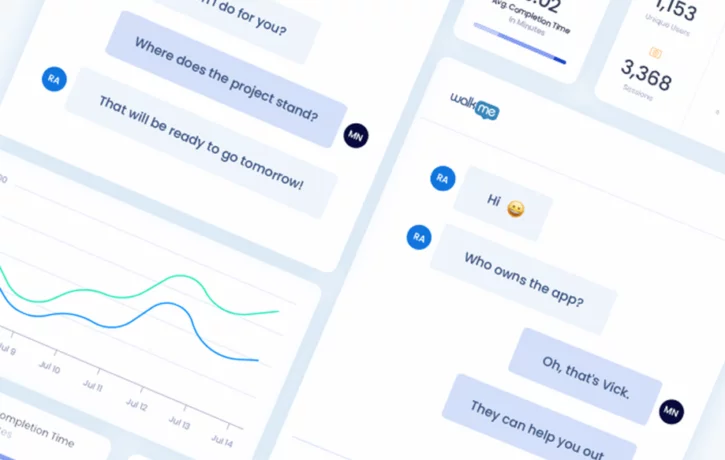In the Deployment Guide on Digital Adoption recently published by IDC, Amy Loomis outlines the three phases of a comprehensive digital adoption strategy. In previous blogs, we described Phase 1: How to lay the proper groundwork for successful digital adoption projects, and then Phase 2: How to properly measure and communicate value.
In this blog, I want to share my insights about guiding companies through Phase 3: Growing value beyond the initial set of use cases.
The key challenge is making people aware that realizing value from that first project with a Digital Adoption Platform (DAP) isn’t an end—it’s a beginning. But this fact isn’t always apparent, because using a DAP to drive digital transformation is a new competency at many companies, and it isn’t learned overnight.
Communication is the magic ingredient that makes the value garden grow. Here are the different levels of communication to which you need to pay attention so you can drive fruitful digital transformation where you work.
Start communication at home
It’s like the ancient Chinese proverb, “The journey of a thousand miles begins with a single step.” The single step is your first project using a DAP, and the team working on that project is where communication begins.
Make sure everyone on that team understands why this tech was bought, and why digital adoption became a priority in their organization. If a VP of Product Management buys digital adoption software to help with the user journey on their web pages, and then doesn’t communicate why it was bought to developers, who are passionate about the pages they built, there’s going to be friction.
Reducing that friction is key for communicating to stakeholders in other departments that DAP capabilities brought tangible benefits to your department. If there’s discontent on your team from misunderstood expectations, that becomes a barrier to making a strong point to others.
See the big picture
The next point to be communicated: digital transformation isn’t a single project—it’s an always-on effort that opens new career paths. But that can be difficult for important stakeholders to realize.
If your Digital Adoption Manager’s job revolves around Salesforce, and their paycheck comes from how they use Salesforce, it’s easy for them to only care about DAP applications for Salesforce.
I like to highlight success stories to get those people thinking outside of their boxes. I worked with Susan, a Salesforce admin at a global software company. We started solving one specific problem, but then looked at the trickle-down effect of that problem and saw that it touched applications used for Customer Success and Support. Susan positioned herself as somebody who was well-informed on digital transformation and carved a career path for herself. You can be the next Susan.
This isn’t just something that WalkMe is talking about. The reality of digital transformation as a career transcends industries and is shaking up workplaces all over the globe. People who work on DAP projects need to see their position for what it is: a role that can make their mark at the company they work for now and at the company they’ll work for next year or 15 years from now.
Leverage your DAP to tell powerful stories
When communication within the DAP team is complete, it’s time to reach out to stakeholders in other departments. You’ll need hard data proving that you brought financial or operational improvements to your own department, and that you can do that for others too.
An initiative at WalkMe for the last few years has been to build the product to help with cross-departmental communication. We recently launched the Digital Adoption Projects Dashboard in WalkMe Insights.
Enter your initiatives for this quarter, for this year, for next year, and tie that back to engagement metrics from WalkMe and industry standards. That’s real one-to-one proof showing the connection between plain language business goals and the WalkMe content deployed to reach those goals.
Communication isn’t just for securing budget to create more impact with the current application where DAP is deployed; it’s crucial for persuading other departments that this impact can be theirs too. Nothing persuades like the power of storytelling, and a good DAP should provide strong points that make your story compelling.
Blend customer and employee use cases
The next wave of communication needs to be around use cases. As mentioned on page 30 of the IDC guide, the best results come from a mix of employee and customer use cases, which should never be thought of as separate things.
Employee performance has a direct impact on the experience customers have when they interact with a business, so it’s not a big stretch to look at improvements WalkMe made to employee efficiency and trace that to opportunities to increase revenue through guided customer engagement.
A good example is Sales. Enhancing an Account Executive’s ability to process purchase orders more efficiently has a direct impact on the customer’s experience of (a) the time it takes to receive a quote, and (b) the accuracy of the quote.
Or consider Customer Care. Enhancing the Support Agent’s experience with their Live Chat app directly affects (a) the time a customer spends waiting for a response, and (b) the quality of that response.
From there, it’s easy to identify use cases for the customer interface. In the Customer Care example, you can look at the reasons behind most of your chats and use DAP analytics to monitor the screens that generate the most agent interactions. The data gathered can lead to a strategy for DAP content that helps customers be successful on their own to reduce the number of support cases.
For more on growing additional value from digital adoption tech, download the free guide from IDC.

